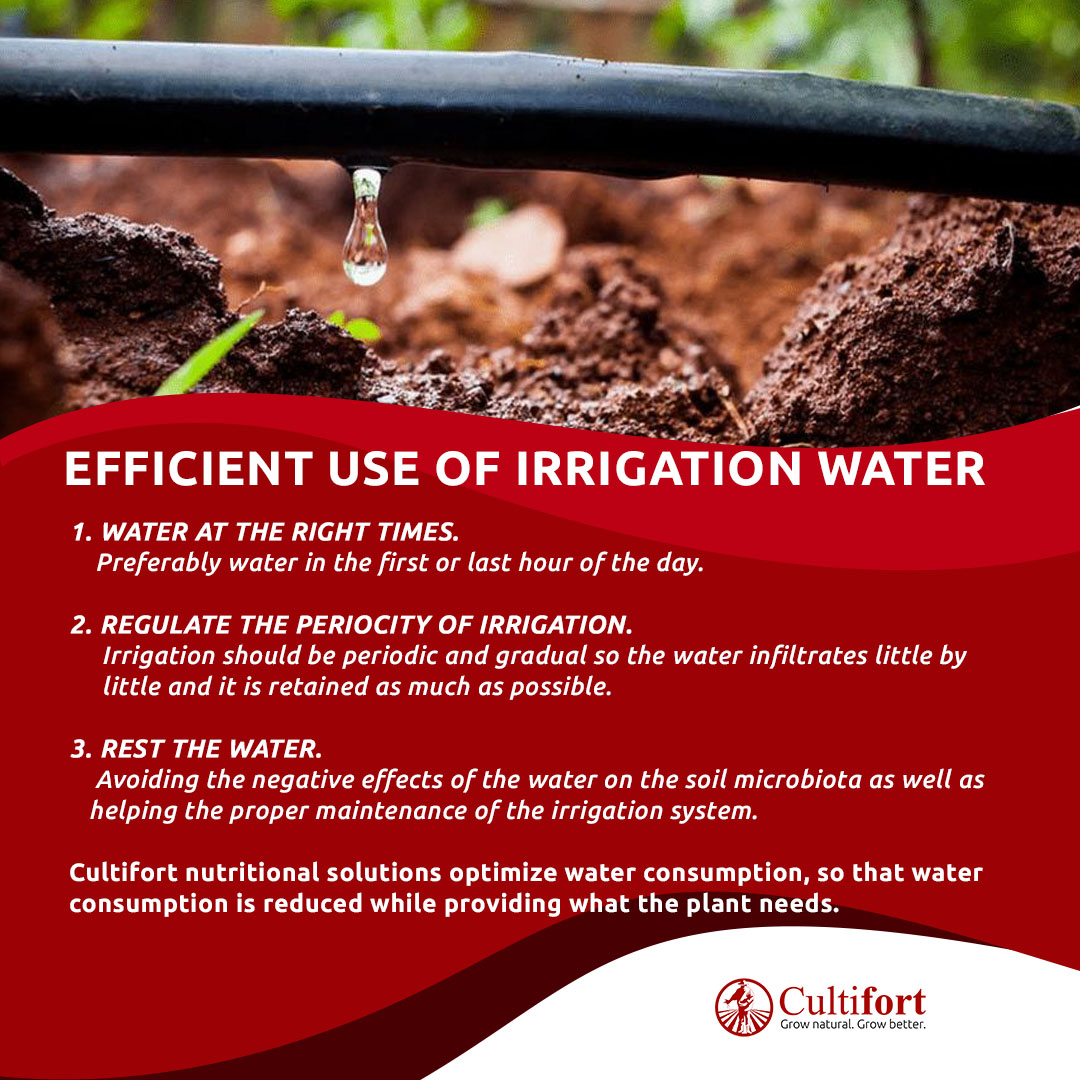Good agricultural practice: efficient use of irrigation water
Water can be considered as the most important natural resource. It is the most abundant liquid on Earth and is a fundamental and irreplaceable element not only as the basis of all forms of life, but also for the normal functioning of many sectors, including agriculture.
Water can be considered a renewable resource when its use, treatment, release and circulation are carefully controlled. However, water is a scarce and vulnerable resource. Its protection is to promote savings, limit and, later, eliminate irrational uses. For example, the bad habit of confusing the toilet with the wastebasket, causes an unnecessary use of water, causing part of the garbage to go directly to river beds.
The use of water in agriculture must therefore be done in the most rational way possible. The conversion of irrigation systems to blanket in more efficient systems such as drip, or a good design of sprinkler irrigation systems, when dripping is not possible, are essential measures to guarantee sustainability and efficient use of water in agriculture.
Last year, Cultifort joined the initiative to promote the Sustainable Development Goals (SDGs). “Guarantee the availability of water and its sustainable management as well as sanitation for all” is the sixth of the seventeen SDGs established by the United Nations. Related to this objective, at Cultifort we want to make a brief and simple recommendation to improve “Efficiency in Water Use” based on 3 key aspects for good irrigation:
- Water at the right times. It should preferably be watered in the first or last hour of the day, since during the central hours or of maximum solar radiation, part of the water would be lost by evaporation when it comes into contact with the hot substrate. Watering in the hours when the soil is cooler, we will ensure that the roots receive and assimilate most of the water we use.
- Regulate the periodicity of irrigation. Irrigation should be periodic and gradual so that the water infiltrates little by little and is retained as much as possible. If the surface of the soil were to dry out between waterings, it would acquire a certain “impermeability” that would mean that when watering, the water did not infiltrate well, increasing surface runoff.
- Rest the water. Chlorinated water without standing can negatively affect beneficial soil microorganisms, it can also contain suspended solids capable of blocking some elements of the irrigation system. If adequate filters are not available, a good management alternative would be to previously store the water in drums, tanks or basins, at least 24 hours, before being used for irrigation. With this technique, part or all of the chlorine contained in the water will evaporate, and the larger suspended solids will settle, thus avoiding the negative effects of the water on the soil microbiota as well as helping the proper maintenance of the irrigation system.
In addition, Cultifort nutritional solutions optimize water consumption, so that water consumption is reduced while providing what the plant needs.


